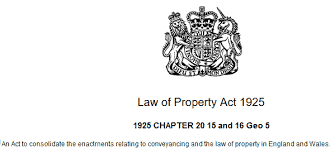When purchasing a property with a spouse, friend or business partner, it is important to think carefully about how the property will be held. Properties can be held both beneficially and legally, which means that one party could hold the beneficial estate while another party holds the legal title.
What exactly is a joint tenancy?
A joint tenancy simply means that co-owners agree to share the entire property, as opposed to holding ownership of distinctly separate shares. If one co-owner passes away, their share of the property will be automatically transferred to the surviving co-owner(s). As such, this type of co-ownership agreement is most often entered into by spouses.
The Law of Property Act 1925 states that the legal title of a property can be held by “joint tenants” who enter into a co-ownership agreement, while the beneficial estate may also be held as “tenants in common.”
What does tenants in common actually mean?
When a tenants in common arrangement is made, co-owners will own a separate share in the property. This type of agreement is most often used by business partners or when one party has contributed a larger sum to the purchase of a property.
Tenants in common agreements also allow co-owners to leave their share of a property in their will, as it won’t automatically be transferred to the surviving co-owner(s). This additional level of flexibility is an attractive prospect for many and it isn’t unusual to see joint tenants seek legal help to convert their agreement into a tenants in common agreement. This conversion is a process referred to as “severance”.
There are numerous reasons why the severance process may be selected, including protecting a share in the property from creditors, in the event of the breakdown of a relationship, and when planning for taxes and estate management.
Is it easy to sever a joint tenancy?
There are several ways in which joint tenants can convert their agreement into a tenants in common agreement, including by mutual agreement, mutual conduct, and by acting on the share of a joint tenant.
Typically, most joint tenants serve a notice of the severance of joint tenancy, which is referenced in section 36(2) of the Law of Property Act 1925.
What is a notice of severance?
A notice can be served on a joint tenant without consulting other parties. To remain legally binding, the notice must be given in writing and be sufficiently served, either in person or via registered post.
In the event that the person being served lacks capacity and their affairs are being managed by a deputy or a legal representative, it is generally best practice to serve the deputy or legal representative rather than the individual themselves.
If the person serving the notice is a family member or joint tenant of the recipient and is acting as their representative due to diminished capacity, it is imperative to avoid instances of conflict of interest. While the notice may be best for all involved, it is advisable to seek advice from qualified legal professionals, such as the team at Parachute Law.
In some cases, the best course of action may be to approach the Court of Protection to request the authorisation of the severance, particularly if the process is not conclusively in the best interest of the recipient.






